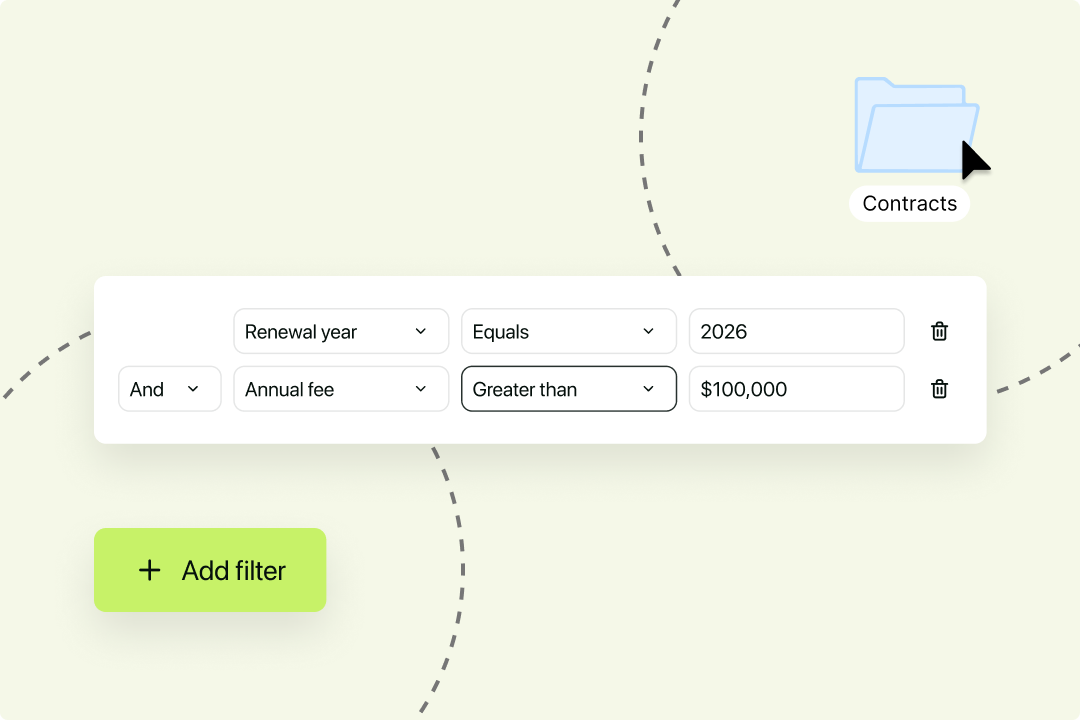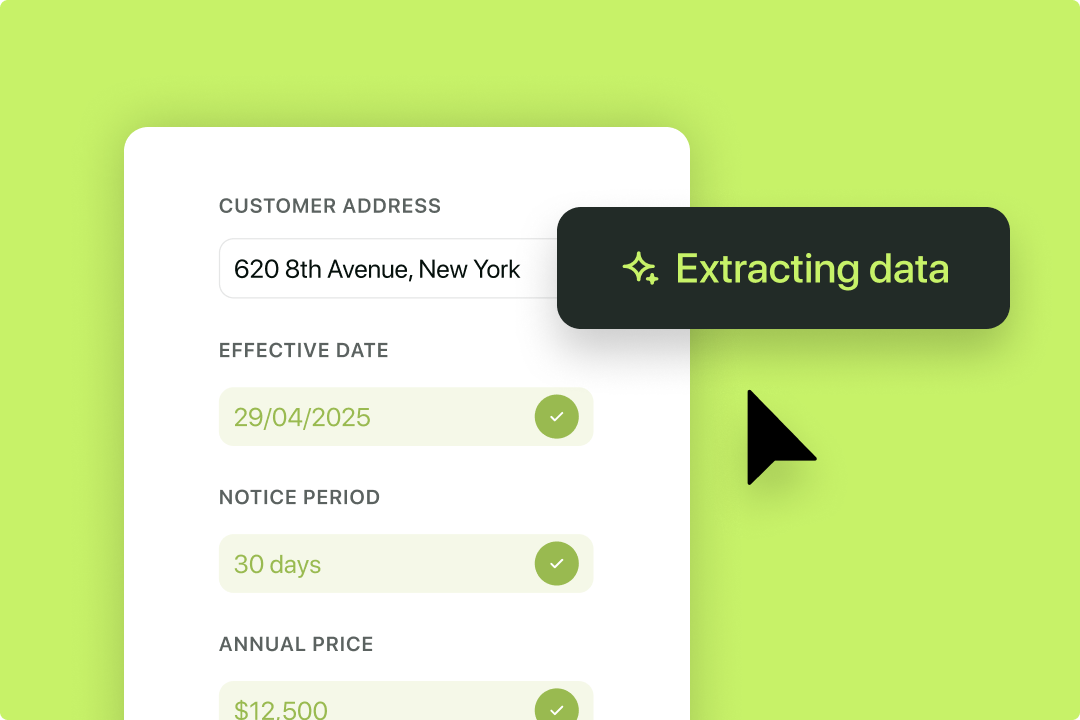Solutions
Customer Support
Resources
Legacy contracts can cause chaos for your business. They’re hard to control, difficult to read and a nightmare to track. Fortunately, the legal teams of today have a helping hand: OCR.
OCR stands for optical character recognition.The technology extracts data from a static or printed text and transforms that data into a machine-readable format.
OCR seeks to enable devices to read and recognize text in a similar way to the human brain. By doing this, OCR converts typed, handwritten or printed text into something a computer can understand and interact with.
OCR technology works by recognizing individual characters on a page and converting these into machine-encoded text. This means that OCR technology transforms images, physical documents, and static files into fully searchable versions of the same content.
This is possible since OCR technology is trained to recognize individual characters that make up text and replicate these. In fact, the most advanced OCR technology can even recognize these characters in a wide range of fonts and within poor-quality images.

One popular example of OCR in the real world is Apple’s use of the technology to enable iPhone users to highlight, copy, paste and look up text in screenshots and photos of physical documents.
Apple’s OCR technology even recognizes handwritten text, enabling users to directly call phone numbers written on paper or transform handwritten writing into digital text instead.
OCR is also commonly used to digitize books and other documents that exist in the offline world. One of the most successful applications, however, has been within contract management software.
OCR contract management is the use of optical character recognition functionality to make contract analysis and comprehension more efficient. This is typically achieved by scanning and converting PDF files and paper contracts into structured data, where they can be read by machines.
This enables businesses to track the data contained within legacy contracts without tagging each element of the static document individually.
Since contracts are traditionally drafted and shared as static documents (e.g PDFs) or physical files, understanding the information contained within them can be a chore.
To identify and understand the values within contracts, legal teams have been tasked with reading each contract in its entirety and manually inputting the contract’s data into a spreadsheet of some sort. This process has held legal and business teams back when tracking and analyzing contracts for years.
OCR contract management has transformed this process by making contracts more dynamic and interactive. The use of OCR in contract management has enabled legal and business teams to quickly search through contracts for specific values and clauses, as well as enabling them to make edits without having to create new versions of a contract every time.
This has significantly reduced contract administration work for businesses and ensured that companies can continue to receive value from their contracts post-signature, too.
But how exactly has the use of OCR in contract management changed the way legal and business teams manage contracts? Below are a few of the ways in which OCR contract management has changed the way businesses approach legacy contracts.
One of the biggest benefits of OCR is that it can make previously ‘analogue’ documents digitally searchable. This functionality enables those accessing previously static contracts to quickly search through them to find specific contracts or clauses.
Traditionally, this would only be achieved by paying law firms a substantial amount of money to read through the contracts and conduct the discovery work for you.
However, when businesses use tools like Juro to digitize these documents, they become searchable immediately, meaning this manual work becomes unnecessary.

OCR enables legal and business teams to identify important contract deadlines. This helps businesses to identify and track dates for upcoming obligations and contract renewals.
When using Juro, legal and business can even use this data to set automated reminders. That means no more missed renewals!
OCR can capture and track important values within contracts, such as contract parties, values, owners and types. This makes it easy to filter and compare contracts based on these values.
Juro’s OCR functionality also enables users to create a custom dashboard to view this data multiple contracts at any one time. This makes managing large volumes of contracts a breeze, even if they were created outside of the platform.
{{quote1}}
With the right OCR contract management tools, even physical paperwork can become digitized. OCR’s advanced scanning functionality can capture and transfer data from paper to digital copies seamlessly.
This helps fast-growth companies go paperless and begin storing their contracts in a more secure and sophisticated way.
One of the most painful parts of a contract manager or contract specialist’s role is manual data entry. As your business grows, you simply can’t afford to waste your legal team’s time trawling through contracts to extract and capture contract data.
Fortunately, OCR’s ability to make contracts machine-readable means that this work is no longer necessary. Today, most contract management systems can now automate that process and capture this data automatically within a contract repository.
If you aren’t completely sold on the benefits we’ve just discussed, it’s worth considering what these benefits actually mean for busy legal and business teams in practice.
By eliminating the need for manual data entry and in-depth contract review, businesses can now free up legal’s time, thus allowing them to focus on the high-value tasks that matter most.
Eliminating the administrative tasks and manual input required also means that contracts can be analyzed much faster, and more accurately. This means fewer delays in the sales cycle and when getting critical contracts over the line.
But the biggest advantage of using OCR is the control that it gives businesses over their legacy contracts. By converting legacy PDF contracts into machine-readable agreements, businesses can do more with their contracts, from gaining insights to maintaining version control.

Contracts don’t need to be stuck in the dark ages. Thanks to Juro’s OCR functionality, legacy contracts can be digitized and tracked with no manual work.
To find out more about how Juro can transform the way your business manages legacy contracts, fill out the form below.
Lorem ipsum dolor sit amet, consectetur adipiscing elit. Suspendisse varius enim in eros elementum tristique. Duis cursus, mi quis viverra ornare, eros dolor interdum nulla, ut commodo diam libero vitae erat. Aenean faucibus nibh et justo cursus id rutrum lorem imperdiet. Nunc ut sem vitae risus tristique posuere.

